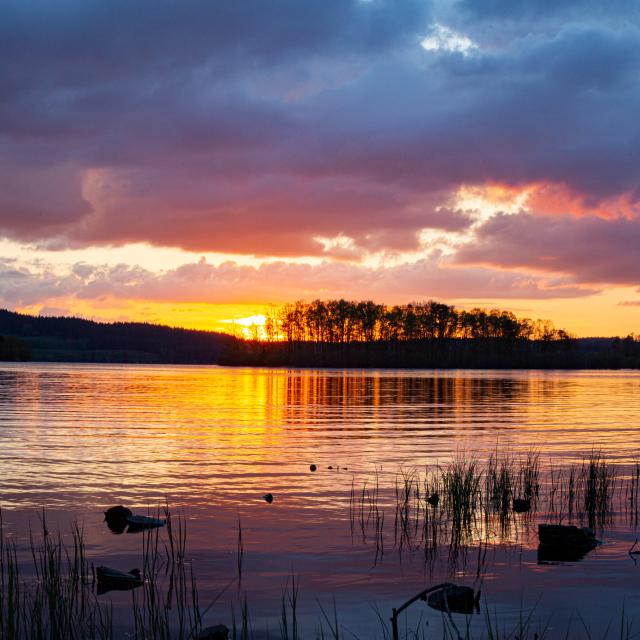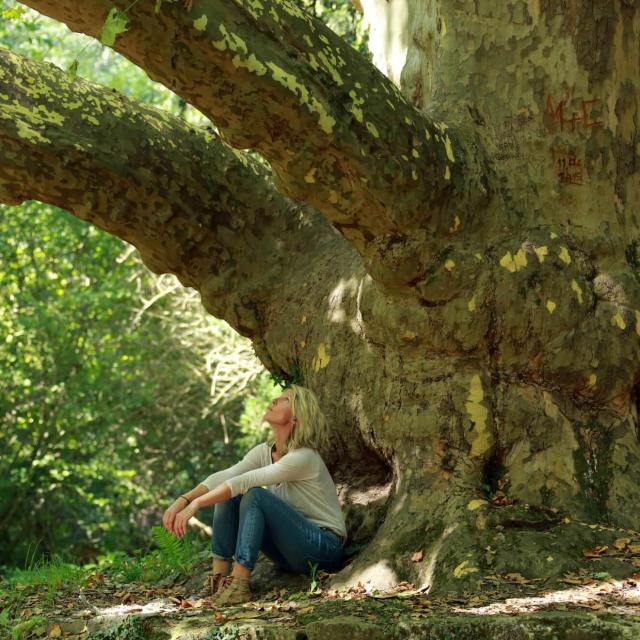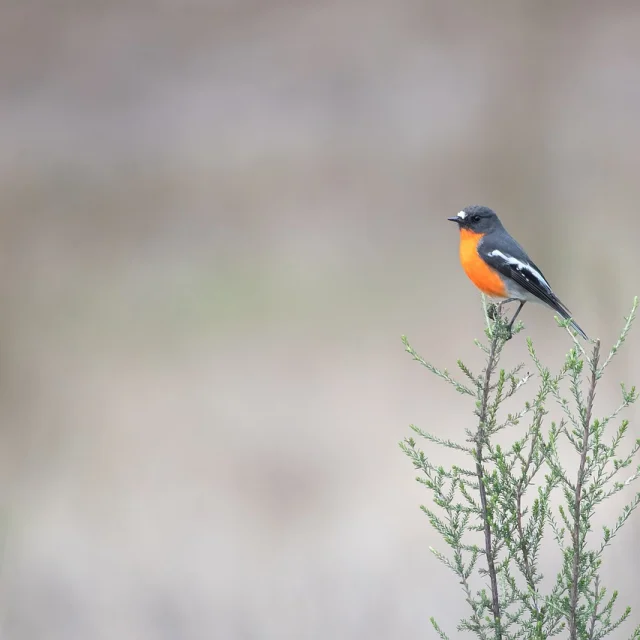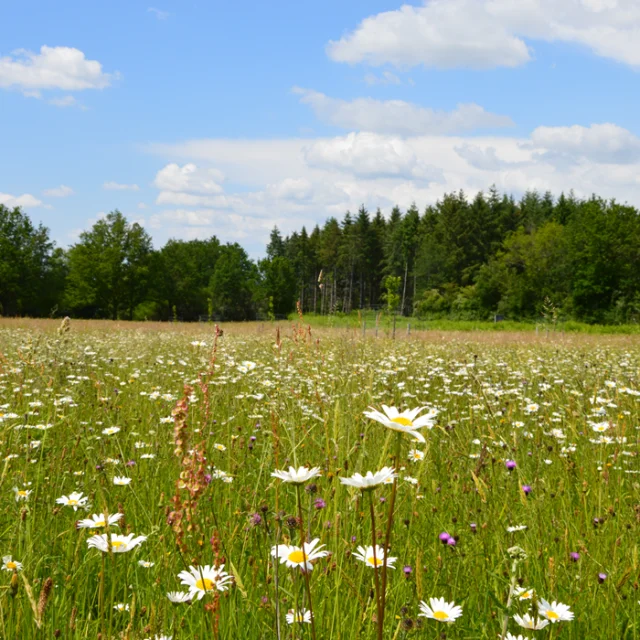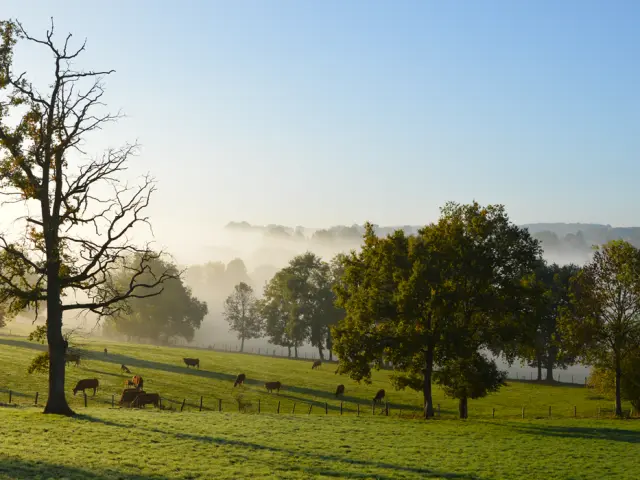 Pnr Perigord Limousin
Pnr Perigord Limousin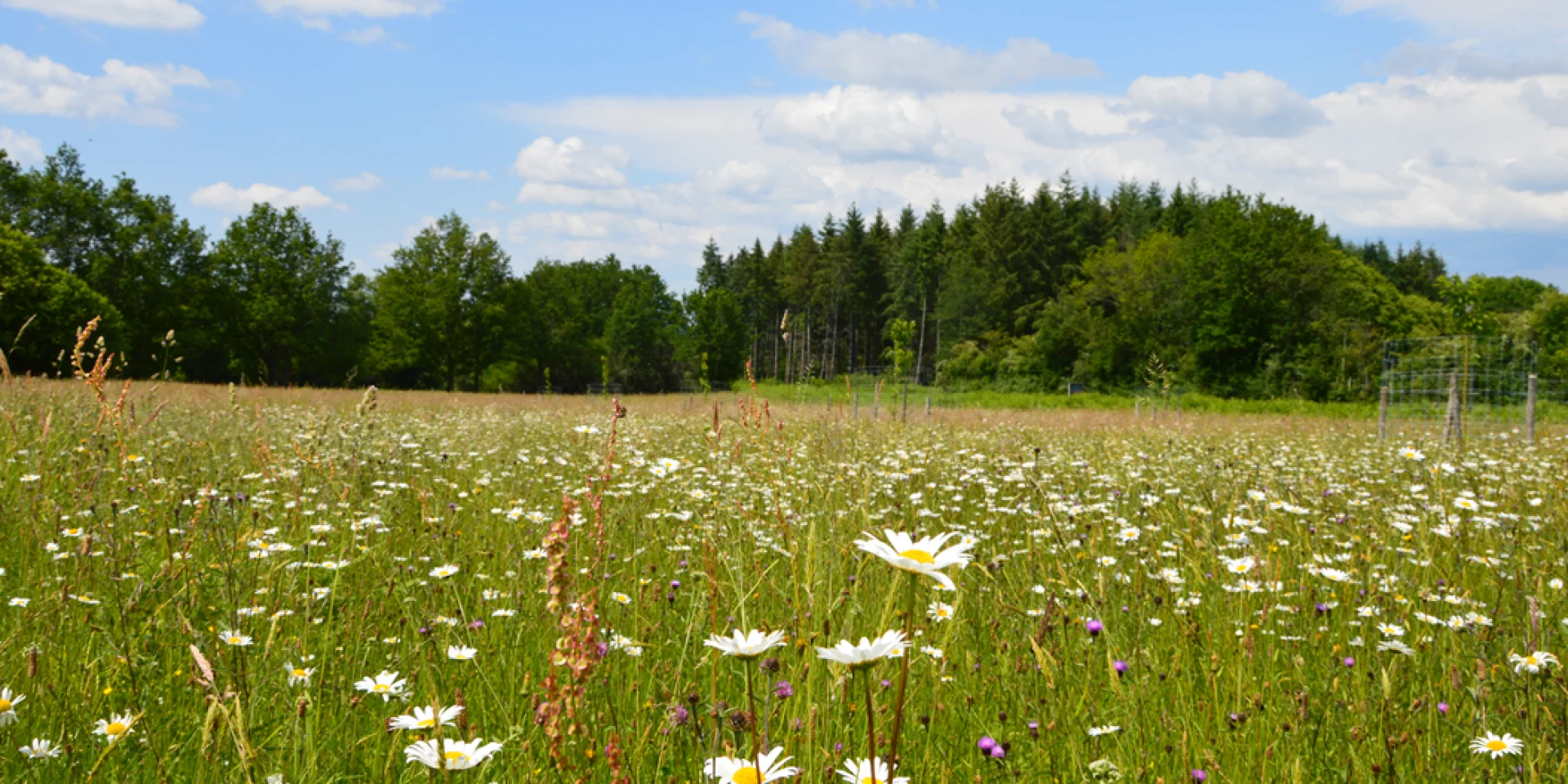 Campaign Limousine - Les Cars
Campaign Limousine - Les Cars Pnr Perigord Limousin
Pnr Perigord Limousin1. Parc Naturel Régional Périgord-Limousin
Land of trees and waterThe Parc Naturel Régional Périgord-Limousin, straddling the Haute-Vienne and Dordogne departments, is an unspoilt area with exceptional natural sites and a wide variety of landscapes: wetlands, peat bogs, ponds, limestone grasslands…
With a surface area of 1800 km², no one is born knowing every nook and cranny! 🍃
To discover it, you’ll need to hike its 2,000 km of footpaths, visit its 21 landscaped sites, stroll its trails and themed sites, be on the lookout for its diverse flora and fauna, listen to all its audio-guided walks, brave its greenway, titillate the fish in its lakes and ponds, lose yourself in its deciduous forests and emblematic chestnut trees and admire the meadows and meadows where limousines and horses peacefully graze.
Ready to immerse yourself in the heart of nature? 💚
2. The Regional Nature Park of Millevaches in Limousin.
Naturally exceptional, exceptionally naturalLocated in the foothills of the Massif Central, the Parc Naturel Régional de Millevaches en Limousin covers over 3,300 km² between Haute-Vienne, Creuse and Corrèze. This 100% Limousin park boasts a wide variety of landscapes: high plateaus, massifs, hills and mountains, plateaus and foothills, and valleys. Each of these landscapes has its own characteristics, environments and species.
Among its emblematic sites, we recommend a visit to the Longeyroux peat bog, Lac de Vassivière with its “Little Canada” feel, or a climb to the summits of Mont Gargan and Mont Bessou.
Don’t forget to keep your eyes peeled for wildlife: otters, pearl mussels, linnets, circaetes, fario trout, not to mention migratory birds and rare butterflies. 🦋
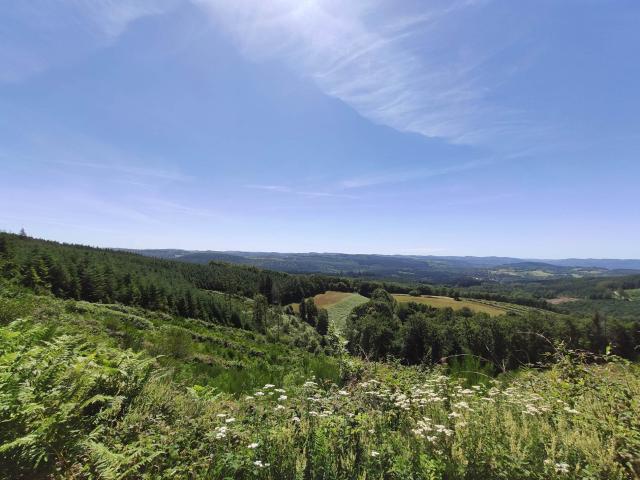 Sentier Les Trois Croix Puy Lagarde A Beaumont Du Lac Vue Sur Le Plateau De Millevaches
Sentier Les Trois Croix Puy Lagarde A Beaumont Du Lac Vue Sur Le Plateau De Millevaches Saint Leger La Montagne Tourbi Re Des Dauges Cen Na
Saint Leger La Montagne Tourbi Re Des Dauges Cen Na3. National Nature Reserves
Rochechouart-Chassenon & the Dauges peat bogThe 50-hectareRochechouart-Chassenon Astroblème National Nature Reserve 🪨 protects the Rochechouart-Chassenon Astroblème site, created by the impact of a giant meteorite 1 km in diameter, which ended its journey at 72,000 km/h on the soil of the Haute-Vienne region 200 million years ago. ☄️💥 Imagine the impact and the gigantic explosion! The impact zone extends over a diameter of 20 km, where the towns and villages around Rochechouart and Chassenon are located today. The meteorite did not survive the force of the explosion, but its fusion with terrestrial rocks gave rise to some unique and rare stones.
The Réserve naturelle nationale de la tourbière des Dauges 🌾 ( Dauges peat bog national nature reserve ) covers 200 ha and protects a peat bog and numerous natural environments of heritage interest, including low marshes, peat bog zones, peaty moors, grasslands, dry moors and woods, including a remarkable holly beech forest. 2 signposted trails enable you to explore the area, and numerous naturalist events and outings are organized throughout the year.
4. Regional Nature Reserves
The Atlantic moors network & the Sauvages reserveThe Réserve naturelle régionale du réseau de moes atlantiques du Parc naturel régional Périgord-Limousin, comprising 7 of the most outstanding moorlands in the Limousin region. Located just a few kilometers apart, the sites are small (between 2 and 10 hectares), covering a total of 40 hectares. The various types of heath (dry, heather, wet, serpentine) are rare habitats in this region. The flora includes 5 protected species and the fauna 23 🌷
The Réserve naturelle régionale des Sauvages is home to a range of habitats representative of the Monts d’Ambazac, some of which are of great interest. Oscillating between 580 and 640 meters above sea level on granitic soil, the 82-hectare site is home to woodlands, a peat bog of around 2 hectares and some ten hectares of open water in the form of 3 ponds dating from the Middle Ages. The flora includes 6 protected and/or endangered species and the avifauna around 50 species. Some fifteen mammals have been recorded, and there are 6 species of amphibian and 7 species of reptile on the site.🦎
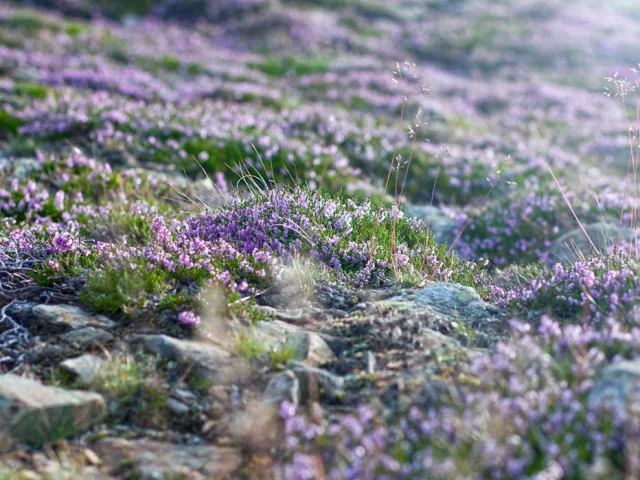 Paysage-lande-bruyère
Paysage-lande-bruyère Tourbières des Dauges
Tourbières des Dauges5. Natura 2000 protected areas
The Natura 2000 network is a group of European natural sites, both on land and at sea, identified for the rarity or fragility of wild animal or plant species and their habitats. Haute-Vienne has 14 of them! 🌿
Here’s the list: The peat bogs at the source of the Dauges stream, the Pouge pond, the ponds in northern Haute-Vienne, the Epagne forest, the moors and wetlands around Lake Vassivière, the Chabannes mines and underground passages in the Monts d’Ambazac, the serpentine grasslands and moors of the southern Haute-Vienne, the Moissannes stream, the Gartempe valley, the Salleron valley, the Taurion valley and tributaries, the Haute-Vallée de la Vienne + the Dronne river system and the Plateau de Millevaches et de Gentioux.
👣 Most of them are freely accessible. However, be sure to use the paths laid out on the sites, in order to preserve them.
6. ZNIEFF
Natural Areas of Ecological, Faunistic and Floristic InterestWith its 172 sites classified as ZNIEFF (= Zones Naturelles d’Intérêt Écologique, Faunistique et Floristiques), the Haute-Vienne department promises unspoilt landscapes and protected local flora and fauna.
The vast majority are ecologically homogeneous areas that are home to at least one rare or threatened species and/or habitat of local, regional, national or Community interest.
And 6 of them are large, rich or little-modified natural areas offering significant biological potential. They have a functional role as well as ecological and landscape coherence. They are: Bois des Landilles and Mas Boucher; Étangs de la région de Thouron; Forêt de Brigueil; Landes et bois de la butte de Frochet; Monts d’Ambazac and Vallée de la Couze; Vallée de la Tardoire (from Moulin de Cros to Peyrassoulat).
To discover them, there’s nothing like strolling along the hiking trails that line or cross them! 🥾
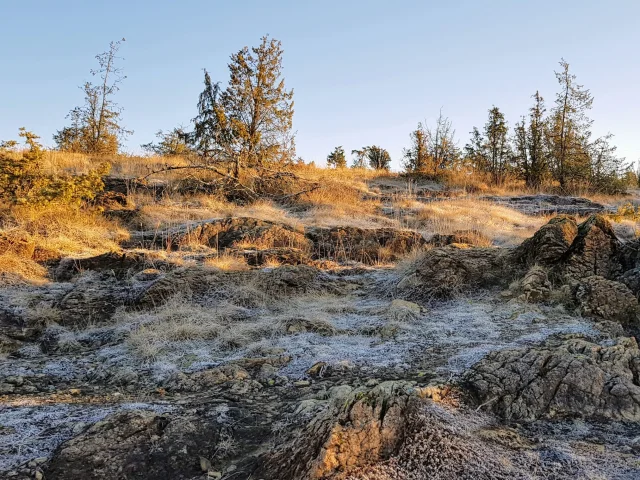 Wellness And Relaxation At Christmas Randonnee Aux Landes Du Cluzeau Et De La Flotte Meuzac Et Chateau C
Wellness And Relaxation At Christmas Randonnee Aux Landes Du Cluzeau Et De La Flotte Meuzac Et Chateau C Tourbiere des Dauges dans les Monts d'Ambazac
Tourbiere des Dauges dans les Monts d'Ambazac7. Geological and bioarchaeological sites
Our département’s subsoil abounds in geological treasures, which the Institut National du Patrimoine Naturel (National Institute for Natural Heritage) has made a point of inventorying with the aim of preserving them. 45 Haut-Viennois sites are currently listed in the national geological heritage inventory, and 51 are listed as bioarchaeological sites. 🌿
Some of them have been set up to help us learn more about our all-important natural heritage. Here’s a small selection of the sites that have been set up to welcome you: Marcognac, with its former kaolin mines used to make porcelain, the Atelier-Musée de la Terre in Puycheny and its Lande à serpentine, the Maison de la Réserve – Espace Météorite Paul Pellas, where you can discover the incredible story of the impact of a giant meteorite, the Musée de minéralogie et de pétrographie in Ambazac, or the Tourbière des Dauges, an open-air museum of the Haut-Viennois biotope.
